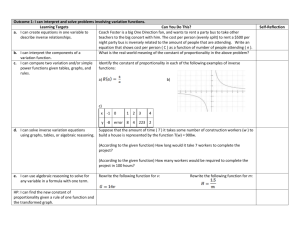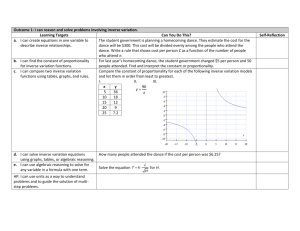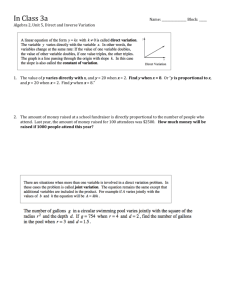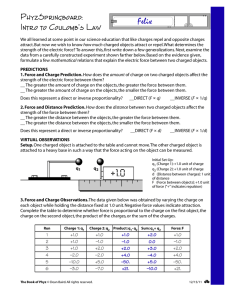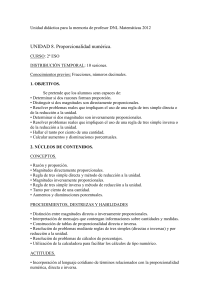Outcome 2: Reason and critique logical arguments
advertisement
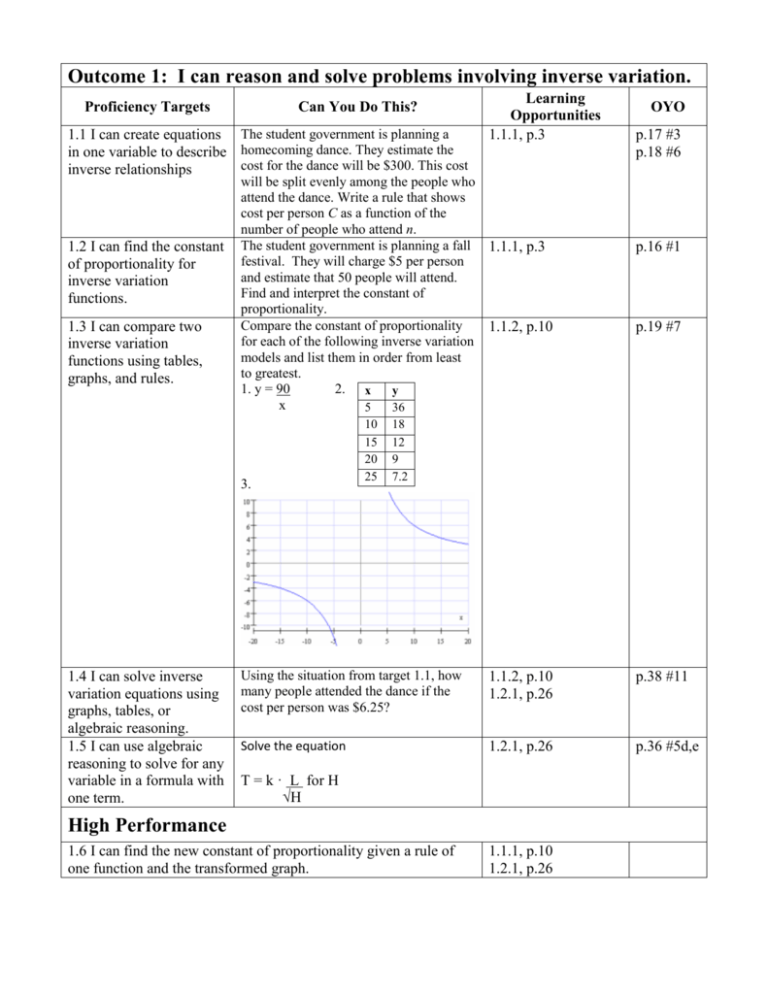
Outcome 1: I can reason and solve problems involving inverse variation. Proficiency Targets Can You Do This? 1.1 I can create equations The student government is planning a in one variable to describe homecoming dance. They estimate the cost for the dance will be $300. This cost inverse relationships 1.2 I can find the constant of proportionality for inverse variation functions. 1.3 I can compare two inverse variation functions using tables, graphs, and rules. will be split evenly among the people who attend the dance. Write a rule that shows cost per person C as a function of the number of people who attend n. The student government is planning a fall 1.1.1, p.3 festival. They will charge $5 per person and estimate that 50 people will attend. Find and interpret the constant of proportionality. Compare the constant of proportionality 1.1.2, p.10 for each of the following inverse variation models and list them in order from least to greatest. 1. y = 90 2. x y x 5 36 3. 1.4 I can solve inverse variation equations using graphs, tables, or algebraic reasoning. 1.5 I can use algebraic reasoning to solve for any variable in a formula with one term. Learning Opportunities 1.1.1, p.3 10 15 20 25 OYO p.17 #3 p.18 #6 p.16 #1 p.19 #7 18 12 9 7.2 Using the situation from target 1.1, how many people attended the dance if the cost per person was $6.25? 1.1.2, p.10 1.2.1, p.26 p.38 #11 Solve the equation 1.2.1, p.26 p.36 #5d,e T = k · L for H √H High Performance 1.6 I can find the new constant of proportionality given a rule of one function and the transformed graph. 1.1.1, p.10 1.2.1, p.26 Vocabulary List 1. Variation: 11. Diameter: 2. Direct: 12. Lumens: 3. Direct Variation: 13. Line of symmetry: 4. Inverse: 14. Asymptote: 5. Inverse Variation: 15. Multivariable Functions: 6. Proportional: 7. Constant of Proportionality: 8. Function: 9. Power Function: 10. Intensity:
